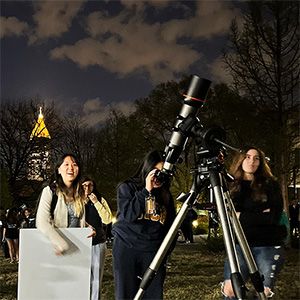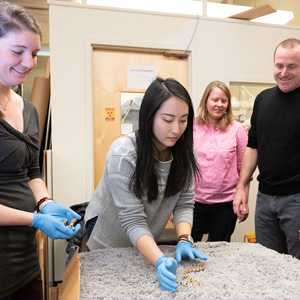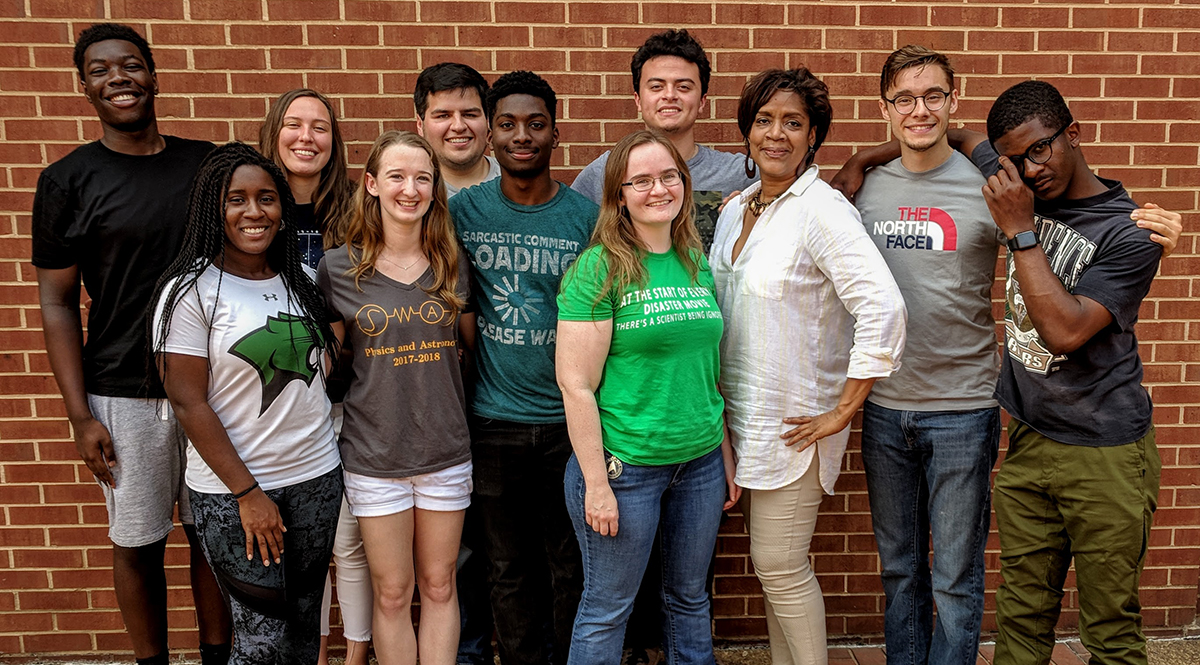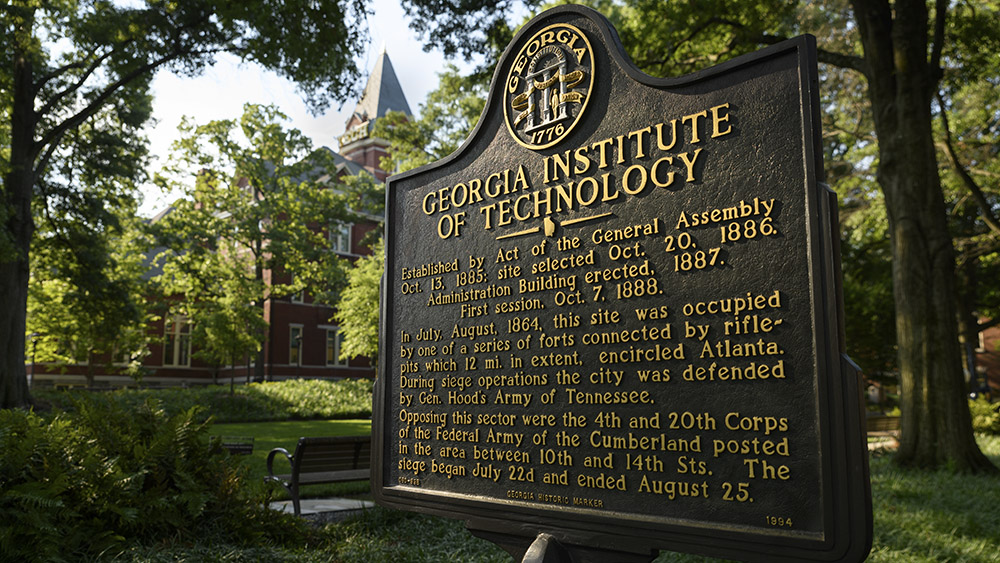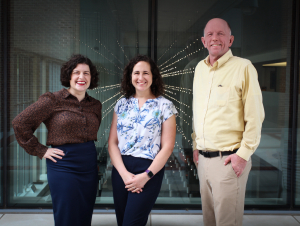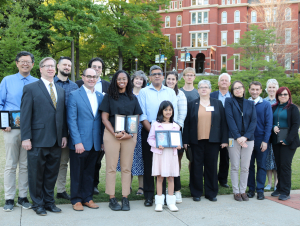
Job Opportunities
Academic Professional or Sr. Academic Professional (EO) Open Rank, Non-Tenure Track Faculty Position in the School of Physics – Job ID 280546
Open Rank, Non-Tenure Track Academic Professional or Sr. Academic Professional Faculty Position in the School of Physics – Job ID 276932
Open-Rank, Tenured/Tenure-Track Position in Physics - Artificial Intelligence/Machine Learning - Job ID 276418
Open Rank, Tenure Track Position in Experimental or Theoretical Neutrino - Physics. Job ID 276476
Tenure-track faculty search at Georgia Tech in solar-terrestrial science and space weather
Latest News
Students from all majors are invited to register for the new Minor in Astrobiology at Georgia Tech. Welcoming its first enrolled students in Fall 2025, the minor is the latest degree offering from the College of Sciences and Georgia Tech Astrobiology Program.
In Spring 2025, 67 academic and research faculty members were promoted to the highest rank. We are honored to celebrate their accomplishments and contributions to the Georgia Tech community.
A recent physics study has unlocked a new type of origami-inspired folding, and could lead to advances in everything from heart stents to airplane wings.
The College of Sciences recognized outstanding faculty and staff for the 2024-25 academic year as well as recent retirees.
Events
In-Person Work at Georgia Tech: Hybrid Town Hall
The campus community is invited to join us for a town hall on Wednesday, May 14, from 10 to 11 a.m. to review the Institute’s phased approach toward a more in-person work model for the 2025-26 academic year.
School of Physics CM/AMO/Quantum Seminar - Dr. Chuankun Zhang
A solid-state nuclear clock using a VUV frequency comb
A solid-state nuclear clock using a VUV frequency comb
The size and complexity scaling of quantum systems from individual trapped ions to tens of thousands of atoms in optical lattices has driven major advances in precision measurement and quantum technology.
Experts in the News
Biofilms have emergent properties: traits that appear only when a system of individual items interacts. It was this emergence that attracted School of Physics Associate Professor Peter Yunker to the microbial structures. Trained in soft matter physics — the study of materials that can be structurally altered — he is interested in understanding how the interactions between individual bacteria result in the higher-order structure of a biofilm
Recently, in his lab at the Georgia Institute of Technology, Yunker and his team created detailed topographical maps of the three-dimensional surface of a growing biofilm. These measurements allowed them to study how a biofilm’s shape emerges from millions of infinitesimal interactions among component bacteria and their environment. In 2024 in Nature Physics, they described the biophysical laws that control the complex aggregation of bacterial cells.
The work is important, Yunker said, not only because it can help explain the staggering diversity of one of the planet’s most common life forms, but also because it may evoke life’s first, hesitant steps toward multicellularity.
Quanta Magazine 2025-04-21T00:00:00-04:00Postdoctoral researcher Aniruddha Bhattacharya and School of Physics Professor Chandra Raman have introduced a novel way to generate entanglement between photons – an essential step in building scalable quantum computers that use photons as quantum bits (qubits). Their research, published in Physical Review Letters, leverages a mathematical concept called non-Abelian quantum holonomy to entangle photons in a deterministic way without relying on strong nonlinear interactions or irrevocably probabilistic quantum measurements.
Physics World 2025-04-09T00:00:00-04:00Peter Yunker, associate professor in the School of Physics, reflects on the results of new experiments which show that cells pack in increasingly well-ordered patterns as the relative sizes of their nuclei grow.
“This research is a beautiful example of how the physics of packing is so important in biological systems,” states Yunker. He says the researchers introduce the idea that cell packing can be controlled by the relative size of the nucleus, which “is an accessible control parameter that may play important roles during development and could be used in bioengineering.”
Physics Magazine 2025-03-21T00:00:00-04:00School of Physics Professor Ignacio Taboada provided brief commentary on KM3NeT, a new underwater neutrino experiment that has detected what appears to be the highest-energy cosmic neutrino observed to date.
“This is clearly an interesting event. It is also very unusual,” said Taboada, spokesperson for the IceCube experiment in Antarctica. IceCube, which has a similar detector-array design as KM3NeT but is encased in ice rather than water, has detected neutrinos with energies as high as 10 PeV, but nothing in 100 PeV range. “IceCube has worked for 14 years, so it’s weird that we don’t see the same thing,” Taboada said. Taboada is not involved in the KM3Net experiment.
The KM3NeT team is aware of this weirdness. They compared the KM3-230213A event to upper limits on the neutrino flux given by IceCube and the Pierre Auger cosmic-ray experiment in Argentina. Taking those limits as given, they found that there was a 1% chance of detecting a 220-PeV neutrino during KM3NeT’s preliminary (287-day) measurement campaign.
This also appeared in Scientific American and Smithsonian Magazine.
Physics Magazine 2025-02-12T00:00:00-05:00Georgia Tech researchers from the School of Chemistry and Biochemistry, the School of Earth and Atmospheric Sciences, and the School of Physics including Regents' Professor Thomas Orlando, Assistant Professor Karl Lang, and post-doctoral researcher Micah Schaible are among the authors of a paper recently published in Scientific Reports.
Researchers from the University of Georgia and Georgia Tech demonstrated that space weathering alterations of the surface of lunar samples at the nanoscale may provide a mechanism to distinguish lunar samples of variable surface exposure age.
Nature Scientific Reports 2025-01-02T00:00:00-05:00Despite the fact that Antarctica is extraordinarily difficult to get to, astronomers love it and have chosen it as the location for the IceCube Neutrino Observatory. What could possibly make such a remote location so desirable for space science that it’s worth all that trouble?
In this article, scientists including Georgia Tech's Brandon Pries from the School of Physics explain why the South Pole is such a hotspot for astronomers. The answer? At the South Pole, you can best view neutrons and neutrinos in space.
Pries compares the benefits of the South Pole to the North Pole. “The North Pole is more difficult because ice coverage there fluctuates,” explains Pries. “There is a foundation of bedrock underneath Antarctica that serves as a solid base for the IceCube instruments.” This bedrock is also why Antarctica is home to the South Pole Telescope, a radio observatory that helped take the first ever photo of a black hole.
Popular Science 2024-09-05T00:00:00-04:00
